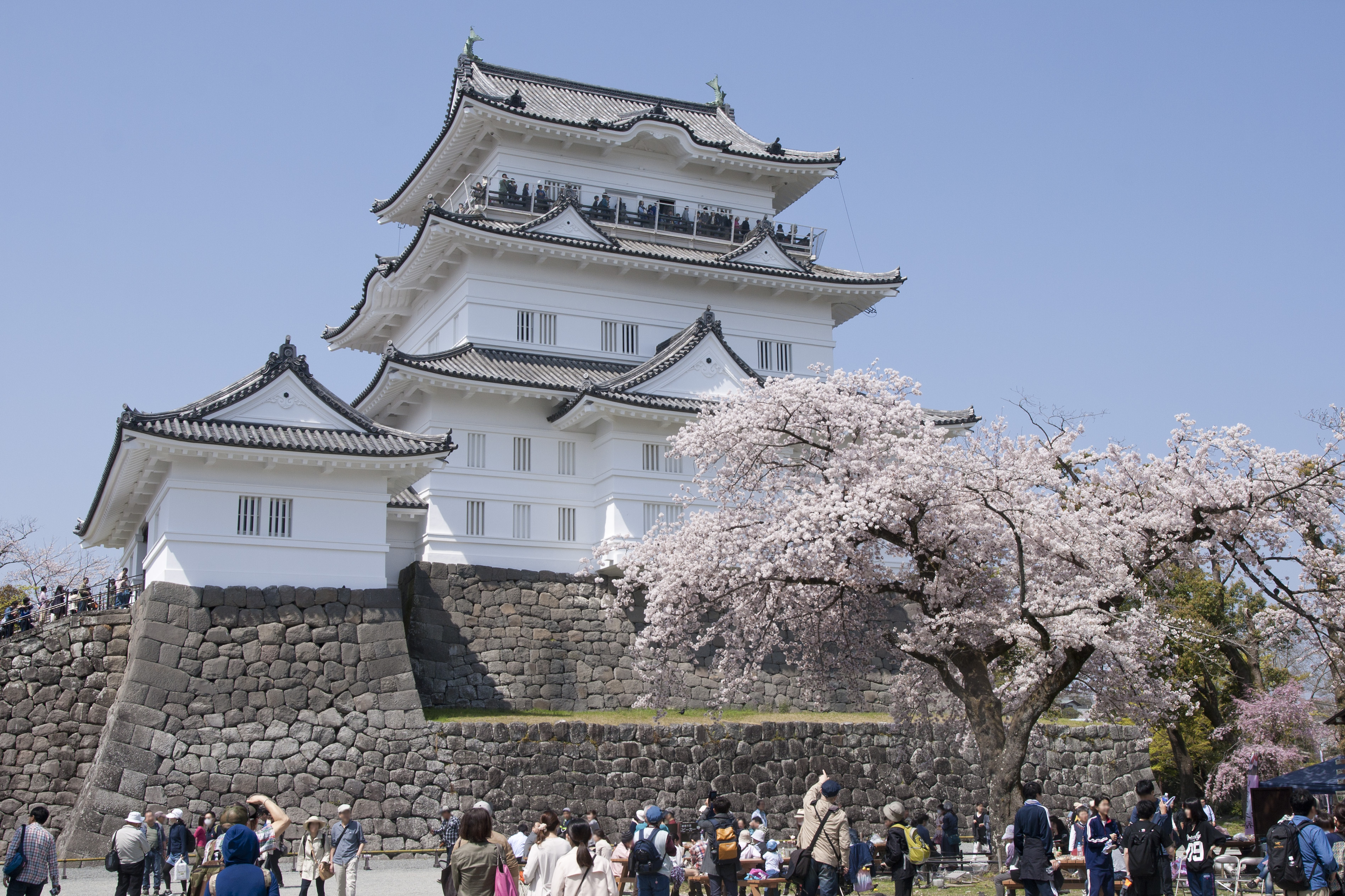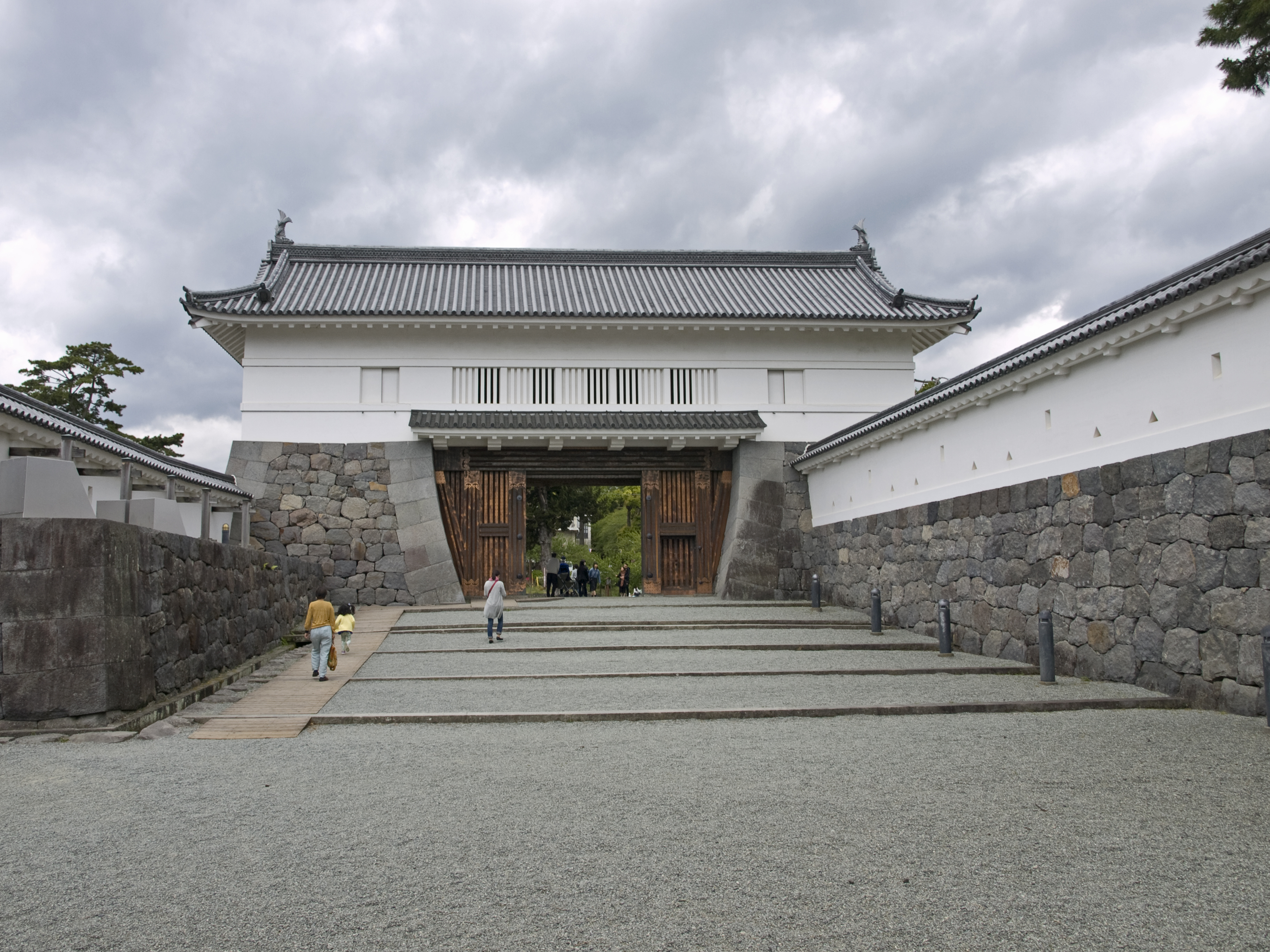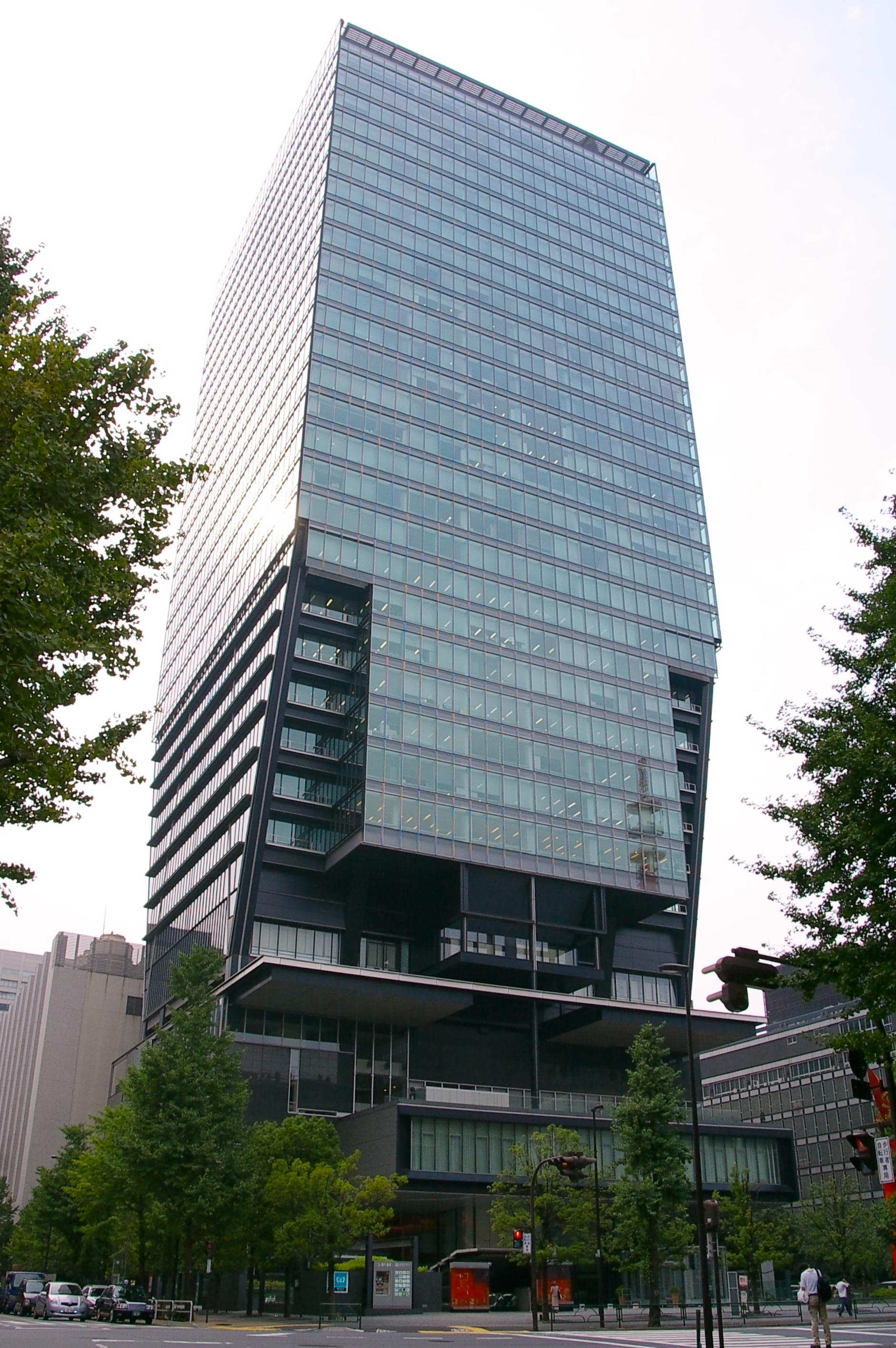|
Matsuda Norihide
was a Japanese samurai and commander of the Sengoku period. He was one of the most important vassals of the Go-Hōjō clan and the salary he got was the highest among Go-Hōjō clan's vassals. On the occasion of the Siege of Odawara (1590), he insisted on keeping Odawara Castle but later he secretly betrayed Go-Hōjō clan and tried to join Toyotomi Hideyoshi. After the fall of the Go-Hōjō clan, he was ordered to seppuku by Toyotomi Hideyoshi. On the other hand, his second son Matsuda Hideharu became a vassal of Maeda Toshiie. His cousin Matsuda Yasunaga died in the siege of Yamanaka Castle in 1590. References Samurai 1590 deaths Go-Hōjō clan Suicides by seppuku {{Samurai-stub ... [...More Info...] [...Related Items...] OR: [Wikipedia] [Google] [Baidu] |
Odawara Castle
is a landmark in the city of Odawara in Kanagawa Prefecture, Japan. History Odawara was a stronghold of the Doi clan during the Kamakura period, and a fortified residence built by their collateral branch, the Kobayakawa clan, stood on the approximate site of the present castle. After the Uesugi Zenshū Revolt of 1416, Odawara came under the control of the Omori clan of Suruga. They were in turn defeated by Ise Moritoki of Izu, founder of the Odawara Hōjō clan in 1495. Five generations of the Odawara Hōjō clan improved and expanded on the fortifications of Odawara Castle as the center of their domains, which encompassed most of the Kantō region. During the Sengoku period, Odawara Castle had very strong defenses, as it was situated on a hill, surrounded by moats with water on the low side, and dry ditches on the hill side, with banks, walls and cliffs located all around the castle, enabling the defenders to repel attacks by Uesugi Kenshin in 1561 and Takeda Shingen ... [...More Info...] [...Related Items...] OR: [Wikipedia] [Google] [Baidu] |
Hojo Clan
Hojo or Hōjō may refer to: Hojo or HoJo: *Howard Johnson's, a U.S. chain of restaurants and hotels *A nickname for Howard Johnson *A nickname for Howard Jones *A nickname for Howard Jones *MGR-1 Honest John, the first nuclear-capable missile and a popular airframe for hobby modelers *Hojo, a supporting character in comic strip ''Mandrake the Magician'' *Professor Hojo, a non-playable character in the video game ''Final Fantasy VII'' Hōjō or Houjou: *Hōjō clan, a family of regents of the Kamakura Shogunate *Late Hōjō clan, daimyō in the Sengoku Period *Hōjō, Ehime, a city in Japan * Hōjō, one of the five kata of Kashima Shinden Jikishinkage-ryū *Hōjō, Tottori, a town in Japan (part of Hokuei) *Hōjō Tokiyuki (Scouting) (1858–1929), early Japanese Scouting notable *Hōjō (Inuyasha), a character in the manga and anime series ''Inuyasha'' * Hōjō Tsukasa (popularly but incorrectly romanized "Hojo", born 1959), manga artist and creator of ''City Hunter'' * Sato ... [...More Info...] [...Related Items...] OR: [Wikipedia] [Google] [Baidu] |
Siege Of Fukazawa
The 1571 siege of Fukazawa castle was one of a number of battles which formed Takeda Shingen's campaigns against the Hōjō clan, during Japan's Sengoku period. History Having burned the town of Odawara surrounding the Hōjō home castle two years earlier, Takeda Shingen laid siege to a number of other Hōjō holdings in the surrounding provinces, including Fukazawa castle, in Suruga province. This was the sixth time he had invaded Suruga; Fukazawa castle was held by Hōjō Tsunashige, who ultimately surrendered and withdrew to Tamanawa Castle was a castle structure in Tamanawa ward of Kamakura, Kanagawa Prefecture, Japan. The adopted brother of Hōjō Ujiyasu, Hōjō Tsunashige was command of the castle. History Hōjō Sōun who had been fighting with the Miura clan built the castle .... References *Turnbull, Stephen (1998). 'The Samurai Sourcebook'. London: Cassell & Co. 1571 in Japan Sieges involving Japan Conflicts in 1571 Battles of the Sengoku period ... [...More Info...] [...Related Items...] OR: [Wikipedia] [Google] [Baidu] |
Siege Of Odawara (1590)
The third occurred in 1590, and was the primary action in Toyotomi Hideyoshi's campaign to eliminate the Hōjō clan as a threat to his power. The months leading up to it saw hasty but major improvements in the defense of the castle, as Hideyoshi's intentions became clear. Thus, despite the overwhelming force brought to bear by Hideyoshi, the siege saw little actual fighting. Background In 1588, Toyotomi Hideyoshi succeeded the unifying nation from Oda Nobunaga. Hideyoshi asked Hōjō Ujimasa and Ujinao, the father and son, to attend the imperial visit to Jurakudai (Hideyoshi's residence and office in Kyoto), but Ujimasa refused it. However, Ujimasa proposed to reschedule the visit to spring or summer of 1590, but Hideyoshi refused the proposal, which worsened their relationship, and in May, 1590, Hideyoshi launched the Odawara Campaign against Hōjō. The Siege The massive army of Toyotomi Hideyoshi surrounded the castle in what has been called "the most unconventional s ... [...More Info...] [...Related Items...] OR: [Wikipedia] [Google] [Baidu] |
Samurai
were the hereditary military nobility and officer caste of medieval and early-modern Japan from the late 12th century until their abolition in 1876. They were the well-paid retainers of the '' daimyo'' (the great feudal landholders). They had high prestige and special privileges such as wearing two swords and ''Kiri-sute gomen'' (right to kill anyone of a lower class in certain situations). They cultivated the '' bushido'' codes of martial virtues, indifference to pain, and unflinching loyalty, engaging in many local battles. Though they had predecessors in earlier military and administrative officers, the samurai truly emerged during the Kamakura shogunate, ruling from 1185 to 1333. They became the ruling political class, with significant power but also significant responsibility. During the 13th century, the samurai proved themselves as adept warriors against the invading Mongols. During the peaceful Edo period (1603 to 1868), they became the stewards and chamberlains of ... [...More Info...] [...Related Items...] OR: [Wikipedia] [Google] [Baidu] |
Sengoku Period
The was a period in History of Japan, Japanese history of near-constant civil war and social upheaval from 1467 to 1615. The Sengoku period was initiated by the Ōnin War in 1467 which collapsed the Feudalism, feudal system of Japan under the Ashikaga shogunate. Various samurai warlords and Japanese clans, clans fought for control over Japan in the power vacuum, while the emerged to fight against samurai rule. The Nanban trade, arrival of Europeans in 1543 introduced the arquebus into Japanese warfare, and Japan ended its status as a Tributary system of China, tributary state of China in 1549. Oda Nobunaga dissolved the Ashikaga shogunate in 1573 and launched a war of political unification by force, including the Ishiyama Hongan-ji War, until his death in the Honnō-ji Incident in 1582. Nobunaga's successor Toyotomi Hideyoshi completed his campaign to unify Japan and consolidated his rule with numerous influential reforms. Hideyoshi launched the Japanese invasions of Korea (159 ... [...More Info...] [...Related Items...] OR: [Wikipedia] [Google] [Baidu] |
Odawara Castle
is a landmark in the city of Odawara in Kanagawa Prefecture, Japan. History Odawara was a stronghold of the Doi clan during the Kamakura period, and a fortified residence built by their collateral branch, the Kobayakawa clan, stood on the approximate site of the present castle. After the Uesugi Zenshū Revolt of 1416, Odawara came under the control of the Omori clan of Suruga. They were in turn defeated by Ise Moritoki of Izu, founder of the Odawara Hōjō clan in 1495. Five generations of the Odawara Hōjō clan improved and expanded on the fortifications of Odawara Castle as the center of their domains, which encompassed most of the Kantō region. During the Sengoku period, Odawara Castle had very strong defenses, as it was situated on a hill, surrounded by moats with water on the low side, and dry ditches on the hill side, with banks, walls and cliffs located all around the castle, enabling the defenders to repel attacks by Uesugi Kenshin in 1561 and Takeda Shingen ... [...More Info...] [...Related Items...] OR: [Wikipedia] [Google] [Baidu] |
Toyotomi Hideyoshi
, otherwise known as and , was a Japanese samurai and ''daimyō'' (feudal lord) of the late Sengoku period regarded as the second "Great Unifier" of Japan.Richard Holmes, The World Atlas of Warfare: Military Innovations that Changed the Course of History, Viking Press 1988. p. 68. Hideyoshi rose from a peasant background as a retainer of the prominent lord Oda Nobunaga to become one of the most powerful men in Japan. Hideyoshi succeeded Nobunaga after the Honnō-ji Incident in 1582 and continued Nobunaga's campaign to unite Japan that led to the closing of the Sengoku period. Hideyoshi became the ''de facto'' leader of Japan and acquired the prestigious positions of Chancellor of the Realm and Imperial Regent by the mid-1580s. Hideyoshi launched the Japanese invasions of Korea in 1592 to initial success, but eventual military stalemate damaged his prestige before his death in 1598. Hideyoshi's young son and successor Toyotomi Hideyori was displaced by Tokugawa Ieyasu at the ... [...More Info...] [...Related Items...] OR: [Wikipedia] [Google] [Baidu] |
Seppuku
, sometimes referred to as hara-kiri (, , a native Japanese kun reading), is a form of Japanese ritual suicide by disembowelment. It was originally reserved for samurai in their code of honour but was also practised by other Japanese people during the Shōwa period (particularly officers near the end of World War II) to restore honour for themselves or for their families. As a samurai practice, ''seppuku'' was used voluntarily by samurai to die with honour rather than fall into the hands of their enemies (and likely be tortured), as a form of capital punishment for samurai who had committed serious offences, or performed because they had brought shame to themselves. The ceremonial disembowelment, which is usually part of a more elaborate ritual and performed in front of spectators, consists of plunging a short blade, traditionally a '' tantō'', into the belly and drawing the blade from left to right, slicing the belly open. If the cut is deep enough, it can sever the abdomin ... [...More Info...] [...Related Items...] OR: [Wikipedia] [Google] [Baidu] |
Sankei Shimbun
The (short for ) is a daily newspaper in Japan published by the It has the seventh-highest circulation for regional newspapers in Japan. Among Japanese newspapers, the circulation is second only to ''Yomiuri Shimbun'', Seikyo Shimbun, ''Asahi Shimbun'', ''Chunichi Shimbun'', ''Mainichi Shimbun'', ''the Nikkei'', Nikkan Gendai, and Tokyo Sports. This newspaper is not actually a national newspaper, but a block newspaper whose publishing area is Kansai and Kanto. However, it was classified as a "national newspaper" by the reverse course policy of the business world ( Keidanren). Corporate profile The ''Sankei Shimbun'' is part of the Fujisankei Communications Group and is 40% owned by Fuji Media Holdings. The company is also the owner of Osaka Broadcasting Corporation (OBC, Radio Osaka). History The ''Sankei Shimbun'' was created by the merger of two older newspapers: ''Jiji News'' and ''Nihon Kogyō Shimbun''. ''Jiji News'' was founded in 1882 by author, translator, and ... [...More Info...] [...Related Items...] OR: [Wikipedia] [Google] [Baidu] |
Maeda Toshiie
was one of the leading generals of Oda Nobunaga following the Sengoku period of the 16th century extending to the Azuchi–Momoyama period. His preferred weapon was a yari and he was known as "Yari no Mataza" (槍の又左), Matazaemon (又左衛門) being his common name. He was a member of the so-called Echizen Sanninshu (Echizen Triumvir) along with Sassa Narimasa and Fuwa Mitsuharu. The highest rank from the court that he received is the Great Counselor '' Dainagon'' ( 大納言). Early life His father was Maeda Toshimasa and his wife was Maeda Matsu. His childhood name was "Inuchiyo" (犬千代). Toshiie was born in the village of Arako (present-day Nakagawa-ku, Nagoya), He was the fourth of seven brothers, of Maeda Toshimasa, who held Arako Castle. Toshiie served Oda Nobunaga from childhood (first as a page) and his loyalty was rewarded by being allowed to be the head of the Maeda clan, very unusual for a fourth son with no apparent failures among his elder brot ... [...More Info...] [...Related Items...] OR: [Wikipedia] [Google] [Baidu] |






